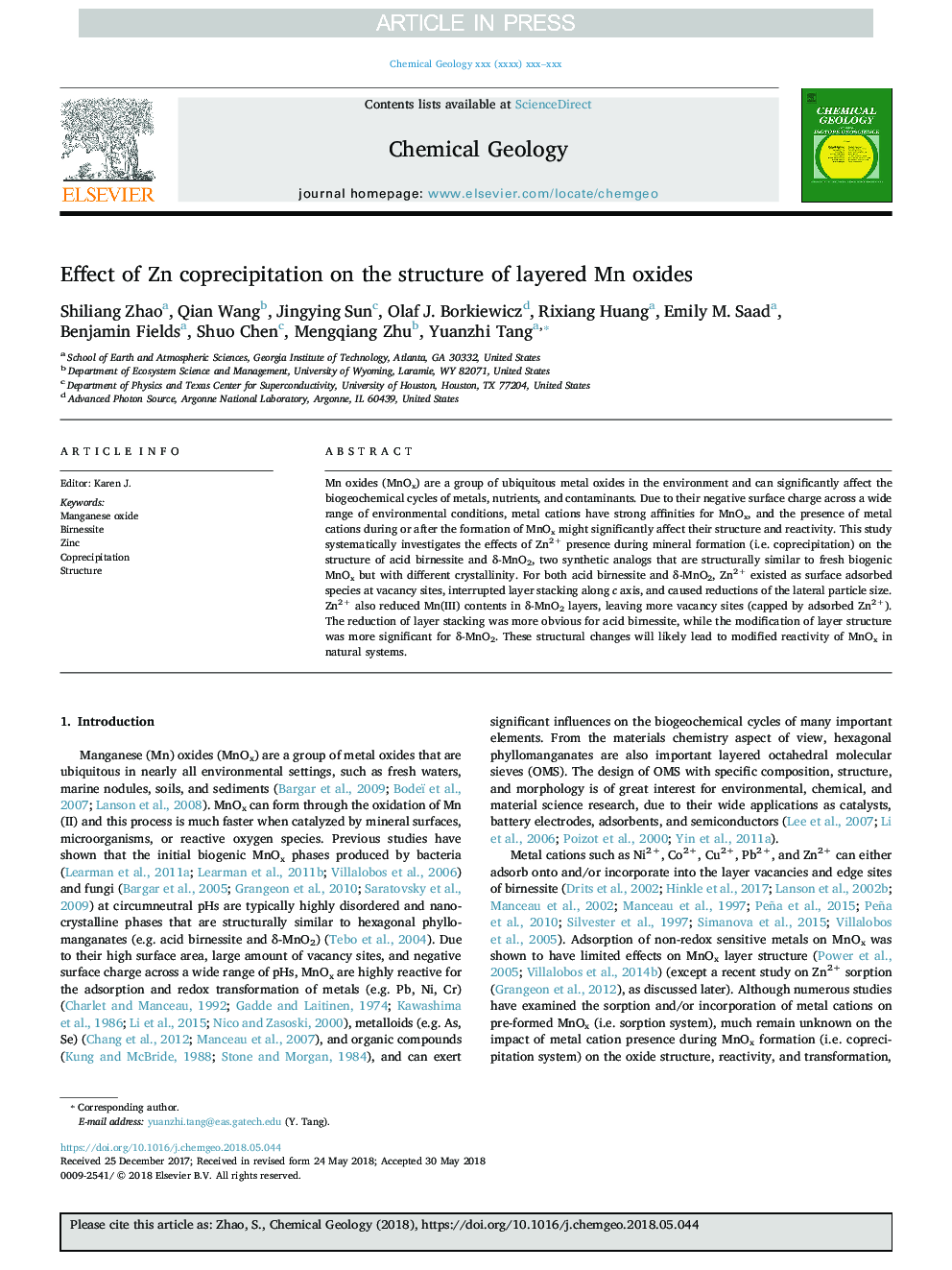| Article ID | Journal | Published Year | Pages | File Type |
|---|---|---|---|---|
| 8910145 | Chemical Geology | 2018 | 12 Pages |
Abstract
Mn oxides (MnOx) are a group of ubiquitous metal oxides in the environment and can significantly affect the biogeochemical cycles of metals, nutrients, and contaminants. Due to their negative surface charge across a wide range of environmental conditions, metal cations have strong affinities for MnOx, and the presence of metal cations during or after the formation of MnOx might significantly affect their structure and reactivity. This study systematically investigates the effects of Zn2+ presence during mineral formation (i.e. coprecipitation) on the structure of acid birnessite and δ-MnO2, two synthetic analogs that are structurally similar to fresh biogenic MnOx but with different crystallinity. For both acid birnessite and δ-MnO2, Zn2+ existed as surface adsorbed species at vacancy sites, interrupted layer stacking along c axis, and caused reductions of the lateral particle size. Zn2+ also reduced Mn(III) contents in δ-MnO2 layers, leaving more vacancy sites (capped by adsorbed Zn2+). The reduction of layer stacking was more obvious for acid birnessite, while the modification of layer structure was more significant for δ-MnO2. These structural changes will likely lead to modified reactivity of MnOx in natural systems.
Related Topics
Physical Sciences and Engineering
Earth and Planetary Sciences
Geochemistry and Petrology
Authors
Shiliang Zhao, Qian Wang, Jingying Sun, Olaf J. Borkiewicz, Rixiang Huang, Emily M. Saad, Benjamin Fields, Shuo Chen, Mengqiang Zhu, Yuanzhi Tang,
